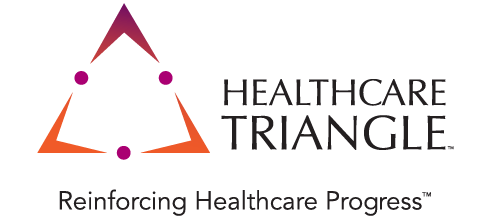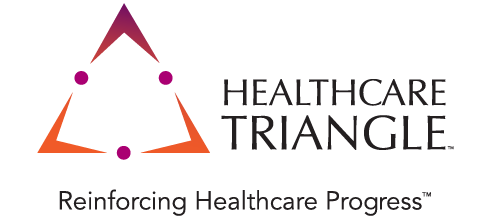Reducing Physician Burnout with EHR Optimization: 3 Examples
By Healthcare Triangle
Jun 1, 2022
Even before the pandemic, American Medical Association research linked breakdowns in EHR usability to physician burnout. Now, with 51% of physicians saying the time they spend on the EHR outside scheduled work time is “excessive” or “moderately high,” identifying ways to optimize use of the EHR is emerging as a key way to relieve physicians’ administrative burden and bring back joy in medicine.
Healthcare Triangle’s work with hospitals and health systems around the country points to multiple opportunities to finetune the EHR—including Epic, which maintains the largest market share for hospital EHRs, at 31%—to help combat burnout. Here are three ways organizations are improving satisfaction by easing EHR frustrations at the point of care.
- Eliminating EHR alert fatigue. When EHR system alerts are misconfigured or overused, they contribute to “alert fatigue,” a scenario that occurs when providers become worn down by alerts and begin to bypass or ignore them. That was the case for one health system, where a rollout of Epic Community Connect to the health system’s ambulatory practice revealed that many of the decision support tools offered in the standard package were broken, incomplete or misconfigured. As the ambulatory clinics prepared to transition from a longstanding EHR to Epic, failure to proactively prevent alert fatigue would have threatened efficiency and satisfaction.
- Healthcare Triangle identified 30 alerts that needed to be reconfigured. Team members then placed restrictions on these “best practice alerts” so they would not be deployed until issues with these alerts were resolved. The health system then established a clinical decision support group to work with the Epic enterprise team to review each of the alerts and determine how the alerts should be adjusted. Some of the alerts were retired; some were corrected and re-released. When changes were made, the organization communicated these changes to staff and monitored performance.
- The impact: A 40% reduction in EHR alerts. When alerts were fired, they were meaningful and actionable. Physicians and clinicians expressed appreciation for eliminating “dreaded pop-ups,” ensuring the alerts they did receive were relevant to their work. Additionally, 82% of the alerts were enhanced with automation to reduce the number of clicks.
- Improving deficiency management. A health information management (HIM) department for one not-for-profit health system discovered that Epic was misrepresenting staffing deficiencies and suspension protocols. Hundreds of “orphaned deficiencies” had accumulated without being tied to an episode of care or a responsible party or location.
- Further, the provider pull list often was not accurate and did not position HIM staff to respond appropriately. This contributed to frustrations among clinicians with HIM staff.
- Healthcare Triangle reviewed ticketing trends and stakeholder collaboration and conducted an analysis of the system to determine the root cause of breakdowns in deficiency statuses, reports and suspension notifications. With this information in hand, Healthcare Triangle recommended six action steps:
-
- Reconfiguring aging parameters in the deficiency configuration records
- Correcting and enhancing duplicate checking logic
- Putting limitations in place that prevented providers from simply reassigning deficiencies to other providers, a scenario that resulted in a “ping-pong effect” that continually extended deadlines
- Replacing outdated methods and criteria for generating letters out of Epic
- Correcting disparities between deficiency notifications, letter-generation criteria and the suspension pull list and automating batch-print configuration, a move that replaced the twice-weekly printing of provider letters
- Enhancing the location build for three areas—psychiatric care, rehabilitation and skilled nursing—to close gaps in deficiency-linking logic
- The impact: An accurate and efficient process for identifying and resolving provider deficiencies and better relations between physicians and HIM. Real-time information on where a provider stands in the suspension process is now available through the system. Further, hyperlinks now direct physicians to the issues that need to be resolved, resulting in a time savings for physicians that represents $1 million in potential new productivity. HIM staff, meanwhile, gained a time savings of two hours per week.
- Growing provider frustration and inefficiency in using Epic Community Connect. A healthcare organization that had deployed Epic Community Connect to a regional network of hospitals and clinic struggled to help providers overcome challenges in using the system. Many of these sites were located in rural areas, so they were disconnected from core IT team assistance and support. If these providers’ growing frustrations with Epic were not addressed, the organization could face the loss of clinician resources, downturns in patient service volume and declines in revenue, given historically high turnover in these communities.
- Healthcare Triangle’s Epic expertise positioned team members to offer tips, tricks and advice to the health system in resolving these issues. The team reviewed system data from Epic’s Provider Efficiency Profile and user access logs, shadowed workflows and created tailored plans for each department or staff member based on their observations. It also prioritized staff education and system personalization to create the type of EHR experience the healthcare organization had envisioned when Community Connect was rolled out to the clinics. This amounted to two to four hours of additional training per physician.
- The impact: 100% of providers and clinicians indicated that the time spent in training—which they initially had balked at—proved valuable. Speed and accuracy of patient scheduling improved, and patient throughput increased as well. Now, the healthcare organization is studying whether the improvements had an impact on patient care.
Making the Right Moves for EHR Optimization
Today, EHR satisfaction is a strong predictor of whether a physician will leave an organization. That’s why making sure your EHR works for your clinical team is critical. Contact us for an analysis of how to drive physician satisfaction and efficiency with your EHR.


